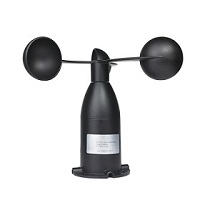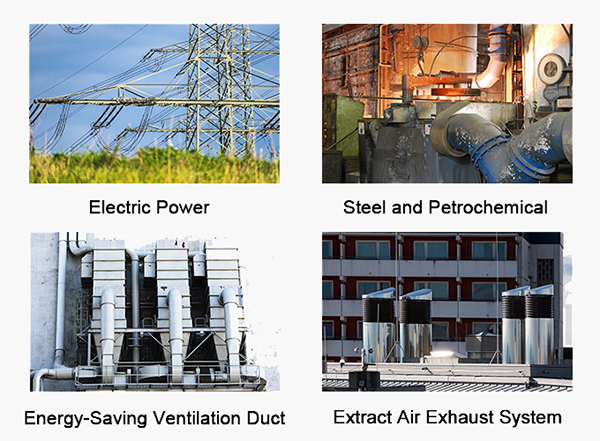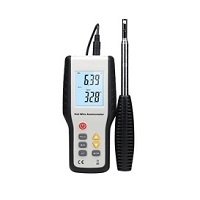An anemometer is a scientific instrument used for measuring and recording the speed and direction of wind in the atmosphere. It plays a vital role in meteorology, environmental science, aviation, and various industrial applications. Anemometers provide valuable data for understanding weather patterns, predicting wind-related events, and ensuring the safe operation of various processes and systems. There are several types of anemometers, each with its own principles of operation and applications. But we will only discuss two of them here: cup anemometer and hot wire anemometer.
Differences in Operating Principle

A cup anemometer is a widely used and simple mechanical device designed to measure the speed or velocity of the wind in the atmosphere. Typically, a cup anemometer consists of three or four cups that are mounted at the end of horizontal arms. These cups are open-ended and catch the wind as it blows, causing the assembly to rotate, according to the wind cups the wind response to the rotation speed curve can measure the size of the wind speed. Generally, the measuring range of the cup anemometer is 0~70m/s, and the measuring range can also be adjusted according to the actual needs.
The Hot wire anemometer is a kind of wind speed measuring instrument based on the thermal measuring principle, which is based on the principle of utilizing the heat emitted from the thin filament heater, and sensing the temperature change of the thin filament heater according to the size of the wind speed and the flow state, and accurately measuring the size of the wind speed through the monitoring of the temperature change.
Differences in Application Scenarios
The cup anemometer is commonly used for meteorological stations, industrial environments, and general wind speed measurements. Additionally, it is used in aviation and aerospace applications for monitoring weather conditions for aircraft, helicopters, rockets, and other forms of transportation to ensure safe flight. In the maritime sector, wind speed is crucial for the navigation and operation of ships. Port and maritime authorities use cup anemometers to provide accurate wind speed information to assist with port operations and ship navigation. Cup anemometers are easier to install and maintain compared to vane anemometers and are therefore often used in commercial and industrial applications.
Hot wire anemometers are used in meteorology at places like weather stations and wind farms to monitor and record wind speed data, providing accurate weather forecasts and wind energy utilization information. In environmental monitoring, they can be used to measure air movement in natural environments, helping researchers understand atmospheric dynamics and their impact on the environment. Furthermore, they can also be applied to the testing and adjustment of indoor HVAC systems to ensure good indoor air circulation and provide a comfortable indoor environment. Due to their sensitivity to measuring small-scale, low-speed wind speeds, they are often used in laboratory environments, gas fluid dynamics research, and aerodynamics experiments.
Advantages and Disadvantages
Advantages of cup anemometer:
1. Simplicity: Cup anemometers are relatively simple in design and operation, making them easy to install and maintain.
2. Durability: They are robust and can withstand harsh weather conditions, making them suitable for long-term outdoor use.
3. Cost-effective: Cup anemometers are typically more affordable compared to some other anemometer types.
Disadvantages of cup anemometer:
1. Limited accuracy at low wind speeds: Cup anemometers may not provide accurate measurements at very low wind speeds due to inertia and friction in the cup rotation.
2. Non-directional: Cup anemometers measure wind speed but not wind direction, so they are not suitable for applications that require wind direction information.
3. Limited response time: They have a slower response time compared to some other anemometer types, making them less suitable for applications requiring rapid changes in wind speed measurement.
Advantages of hot wire anemometer:
1. High sensitivity: Thermal anemometer with a wind speed measurement range of 0.1~25 m/s, supply current about 60~90mA. The hot wire anemometer is equipped with a high-sensitivity thermal sensor probe, it has high measurement accuracy and fast response.
2. Rapid response time: They have a quick response time, making them suitable for applications that require real-time measurement of rapidly changing wind conditions.
3. Directional measurement: Some hot wire anemometers can measure both wind speed and wind direction, making them suitable for a wider range of applications.
Disadvantages of hot wire anemometer:
1. Fragility: Hot wire anemometers are delicate instruments and can be easily damaged, making them less suitable for outdoor use in harsh conditions.
2. High cost: They are generally more expensive than cup anemometers and some other anemometer types.
3. Limited range: Hot wire anemometers are most accurate in low to moderate wind speeds and may not perform as well in very high wind conditions.
Summary
In conclusion, the choice between a cup anemometer and a hot wire anemometer depends on the specific requirements of the application, such as the wind speed range, sensitivity, response time, and environmental conditions. Understanding the difference between a cup anemometer and a hot wire anemometer can select the right one is crucial to obtaining accurate wind measurements. The sisco shop can provide you with a selection of products, please feel free to call us.

